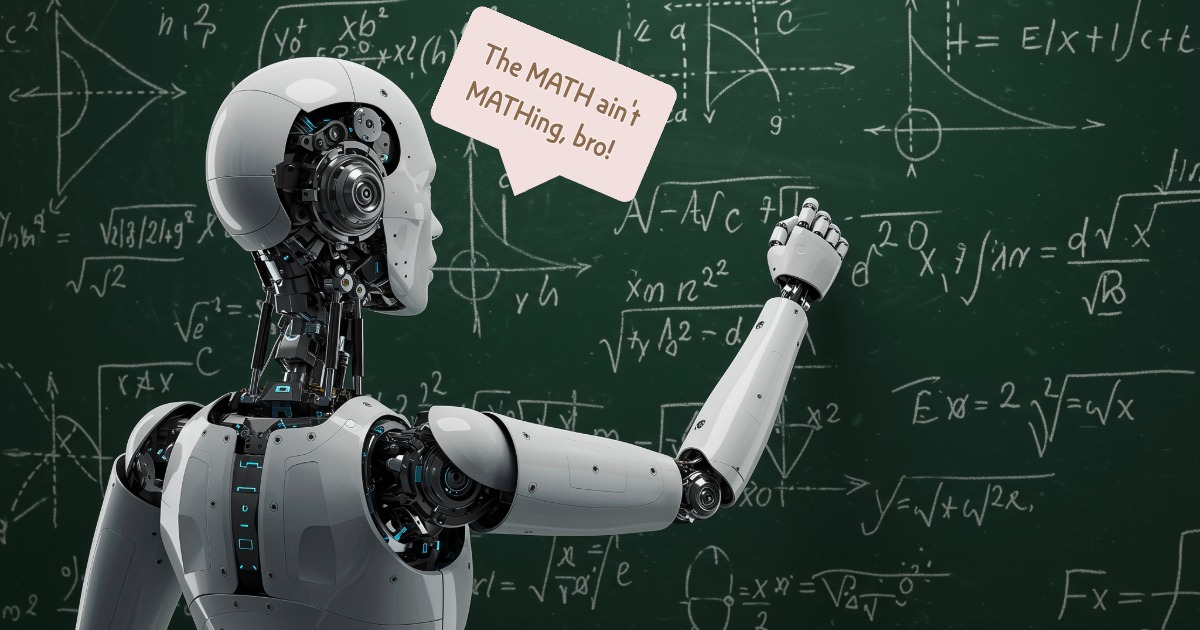Over the past several years, AI has captivated the public imagination with promises of groundbreaking discoveries and revolutionary capabilities. Yet, as many experts have cautioned, the reality is often less glamorous. AI systems like ChatGPT are powerful tools trained on vast datasets, but they do not possess true understanding or original insight. Instead, they generate responses by predicting text patterns learned from their training data. Despite this, hype and misinformation continue to swirl, especially when it comes to claims about AI solving complex problems in fields like mathematics.
Then came the moment that inspired this post. Earlier this week, several OpenAI techbros began celebrating online, claiming that ChatGPT 5 had “solved a long‑standing unsolved mathematical problem.” The excitement quickly spread across X and LinkedIn, where even an OpenAI executive proudly reposted the supposed breakthrough.
According to reports, the so-called “solution” appeared to be a recycled take on one of the Erdős Problems — a collection of famously challenging conjectures in number theory. The model had merely combined fragments of existing published discussions and partial proofs that have been circulating for years in research forums and preprint archives like arXiv. In short, ChatGPT 5 wasn’t uncovering new mathematical ground; it was confidently remixing what mathematicians had already done.
It makes me wonder: have some of these professionals forgotten the fundamentals? The very first thing you learn about large language models is that they predict text based on data they were trained on. They don’t reason, they don’t discover, and they certainly don’t invent new mathematics. Yet in their rush to claim credit, they treated an autocomplete as a revelation.
As someone who is still new to the world of LLMs and prompt engineering in general, I’ve always viewed hallucinations as both a challenge and an opportunity. Yes, hallucinations are a problem — but they also encourage critical thinking and push us to validate, cross-check, and refine our own reasoning. For me, that process has been invaluable in learning how to work with AI responsibly, not blindly.
So it’s surprising — and honestly a bit ironic — to see self-proclaimed AI professionals celebrating what they believed was a mathematical breakthrough. Instead of re-checking the supposed solution or applying basic scrutiny, they cheered like they’d just witnessed a digital renaissance. The irony? The “discovery” wasn’t even new — it was an old Erdős Problem, dressed up in ChatGPT 5’s confident tone and amplified by hype.
Imagine posting this on social media, bragging about this so‑called “breakthrough,” only to get called out hours later — and watch your post age like milk. 🥛💀 And of all people, OpenAI executives? Come on now. How on earth did you get your jobs in the first place?
I started this series, AI Idgit Chronicles, to highlight the moments where things involving AI have gone spectacularly wrong — not to shame, but to show how human error, overconfidence, and lack of critical thinking often lead to the very AI missteps that skeptics love to point to. The irony is that many of these “AI failures” aren’t failures of the technology itself, but of the people who misuse, misunderstand, or overhype it. And this incident? It’s a textbook example.
AI is meant to be a tool — an assistant to support human thinking, not replace it. If ChatGPT 5 had actually solved one of these mathematical problems on its own, we’d be approaching artificial general intelligence (AGI) — and we all know that’s still light-years away. It’s unrealistic, and frankly, overly bold, to claim that ChatGPT 5 suddenly evolved into a self-thinking entity capable of original mathematical reasoning.
Overreliance on AI leads to exactly this kind of embarrassing spectacle. Don’t be that person who posts on social media, celebrates an AI hallucination, and then gets ratio’d by the public for it. Working with AI responsibly means questioning, verifying, and understanding — not worshipping its output like gospel.
Remember: the math ain’t mathing if you stop thinking. 🌱







